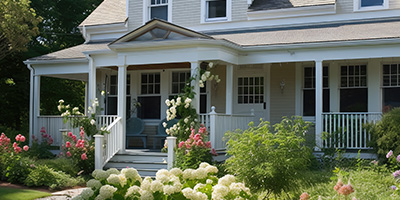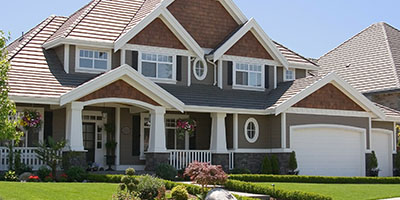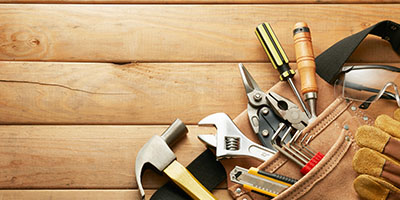How to Tell if Your Home Is Up to Code

Common Housing Code Violations
Whether you’re selling your old house or building a new one, housing codes play a big role in the process. For builders, it can mean costly expenses to stay compliant, and even more costly penalties for violations. For sellers, a bad post-offer housing inspection can knock tens of thousands off your asking price, or worse, scare your buyer away.
Knowing how to keep your home up to code is important – but what exactly does that mean?
What Does ‘Up to Code’ Mean?
The phrase “up to code” is a fairly loose term, as housing and building codes can differ from place to place. But most local housing codes have roots in the International Building Code (IBC) guidelines.
The IBC incorporates many major international code guidelines, including the International Plumbing Code, the International Fire Code, the International Fuel Gas Code and so on.
To say that your home is up to code means that it meets the minimum home safety requirements across a few main categories, including:
- Structural Strength: Are your home’s frame and foundation sturdy?
- Means of Egress: Does your home have accessible emergency exits in case of fire?
- Sanitation: Is your home’s plumbing draining water waste properly?
- Lighting and Ventilation: Is your home well-lit and well-ventilated?
- Energy Conservation: Is your home’s heating and cooling energy efficient?
- Life Safety: Does your home have a fire-safe layout and building materials?
Now that you understand the basics behind housing codes, let’s dive into the most common building code violations – and what to do about them.
How to Avoid the Most Common Building Code Violations
1. Eliminate Handrail Hazards
Improper handrails can cause nasty falls, which is why most local housing codes have handrail requirements. Some of the most common handrail-related building code violations include:
- Poor grip: Handrails must be graspable, and usually under 3 inches in diameter.
- Incorrect height: The correct handrail height is approximately 3 feet from the ground.
- Open ended: Handrails shouldn’t be open on the ends; they need to return to the wall to prevent clothing or purse snags.
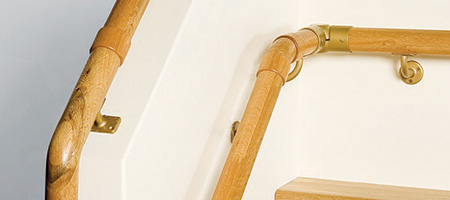
2. Install Windows Correctly
Taking shortcuts on window installations is a surefire way to wind up with a code violation. Some common housing code violations related to windows include:
Using non-tempered glass: For windows next to staircases or bathroom areas, glazed, tempered safety glass is required. Normal glass can shatter and be slipped on, creating another safety hazard in already high-risk areas.
Poor accessibility: Every bedroom, especially a basement bedroom, is required to have at least one egress window. It should be easily accessible for emergency use, both for residents or emergency crews from the outside.
3. Inspect Your Detectors
A 2013 survey by the International Code Council found that two of the most common violations were broken or improperly installed carbon monoxide and smoke detectors.
Smoke Detector Requirements: According to the National Fire Protection Association, smoke detectors should be installed on each level of a home, in every bedroom and outside every sleeping area. Larger homes may require more alarms.
Carbon Monoxide Detector Requirements: Requirements vary by state, but it’s recommended to place alarms on each level, near each sleeping area and near attached garages approximately 5 feet above the ground.

4. Prevent Energy Violations
In addition to traditional housing codes, there are also energy codes designed to reduce a home’s energy usage. The following can help prevent energy building code violations in your home:
- Seal up openings: Pipes and vents that breach your exterior walls can leave your home vulnerable to drafts and water damage. Make sure to properly seal and insulate these openings.
- Divide “conditioned” from “unconditioned”: Unconditioned areas of your home, like the attic, should be well-insulated to divide them from the air-conditioned sections. This prevents heat from transferring between them easily.
- Insulate ducts: Applying insulation to ductwork improves their performance and prevents water condensation from forming, which can cause water damage.
- Improve a window’s U-Factor: The U-Factor is a measure of the heat that a window transfers into a home. Windows with a lower U-Factor are better at blocking heat. Those that transfer too much heat may be a building code violation. Invest in double or triple pane windows or use heat-resistant film to improve an existing window’s U-Factor.
5. Check Your Deck
According to the North American Deck and Railing Association, 50% of the over 40 million decks in America were built in the early 1990s – more than two decades ago. If your deck looks a little worse for wear, give it a good once-over to keep it up to code:
- Check the ledger: A deck ledger is the piece of wood that connects your deck to your home. Bad ledger connections are the number one cause of deck failure, which is extremely dangerous. Go underneath your deck to make sure the ledger, and the anchors securing it to your home, are in good shape. If the ledger is soft or water damaged, or if the bolts are extremely rusty, repair them to keep your deck up to code.
- Inspect the flashing: Metal flashing is important to prevent a wood deck from rotting out where it connects to your home. If your flashing is worn out or missing entirely, replace it. Check where your home’s siding meets your deck; if you see discoloration, it could be water damage, meaning your flashing is improperly installed.
- Install guardrails: Any deck that is 30 inches above grade must have a guardrail that is 36 inches in height for optimal safety.
- Follow manufacturer instructions: If you’re installing a new deck, follow the materials’ manufacturer instructions to the letter. They can help you keep your project up to code.
For more deck inspection tips, check out this handy Deck Inspection Checklist from the experts at Family Handyman.
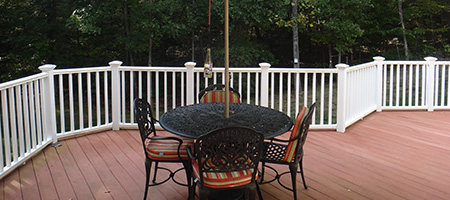
6. Fix Window and Door Flashing
Bad flashing is one of the most common building code violations. It can result in serious water damage that can impact the strength of your home’s structure.
Flashing tape can help seal up small leaks around windows, but for more in-depth fixes, you might have to call in a window and door expert.
7. Address Fire Hazards
You can improve your home’s fire readiness and keep your home up to code with a few fixes, additions and building techniques:
- Check electrical wiring: Electrical malfunction was the cause of over 30 thousand house fires a year from 2015 to 2019. Have your electrical wiring checked and insulated by a professional, especially if your home was built more than 40 years ago.
- Use fire-resistant building supplies: Newer homes should use non-flammable building materials such as fire-rated drywall, glass and window frames to slow an accidental fire’s spread. This is part of an important building practice called passive fire protection (PFP).
- Build firewalls: No, not the kind on your computer. Firewalls, another type of PFP, are thick, fire-rated walls often made of concrete. They sub-divide buildings into various “fire areas” and contain a fire to one spot instead of allowing it to spread to other parts of the home.
- Cover holes in drywall: If you still haven’t patched the hole from your little one’s indoor baseball mishap, you’re probably in violation of fire code. Holes in drywall allow oxygen to move easily between walls, which could feed an electrical fire, causing it to spread out of control.
- Invest in extinguishers: While there is no law requiring fire extinguishers in residences, it’s a good idea to have one in your kitchen and one in your garage.
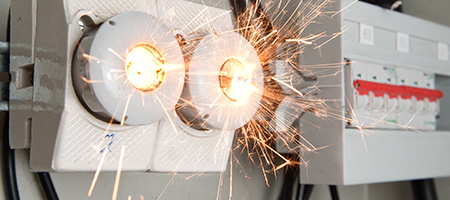
8. Wire Permanent Kitchen Structures
If you’re installing a permanent DIY kitchen island, make sure to include electrical wiring on your to-do list. The National Electric Code requires all permanent structures in kitchen areas to have electricity to keep your home up to code.
This is because we often place hot appliances like griddles or fryers on islands; running a cord over a walkway can cause someone to trip and fall or worse, throw hot grease across the kitchen.
9. Finish Your Basement Carefully
An unfinished basement might seem like the perfect blank canvas for a DIYer. But one wrong renovation can compromise the structural integrity of your entire home, according to the foundation experts at Acculevel:
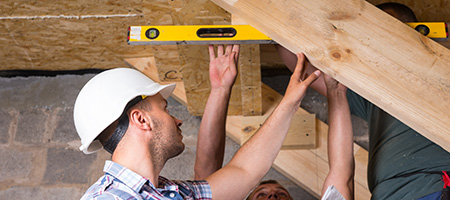

“The most common building code violations we see are homes that someone has ran a new water line or electrical wire [in the basement]. This can often times result in sagging floor or settling walls for the levels above. Be very mindful about causing structural issues by cutting joists, taking out support posts or even forgetting the proper vapor barriers and insulation when the basement is finished out.”
Nolan Beery | Acculevel, Inc.
10. Always, Always, Always Get Permits for DIY Projects
While building permits might seem like just another DIY roadblock, they are important for keeping your home up to code. Gary Martin, housing inspector for Integrity Building Inspections, says you can avoid many building code violations by getting the right permits for DIY work:

“Many DIY projects require a building permit. It helps to ensure that the DIY project being completed is in compliance with the city building code at the time of the project. Most cities will provide guidance as to what is required.”
Gary Martin | Integrity Building Inspections
To find your local housing codes, check out Buildings Guide’s state-by-state building code resource for DIYers.
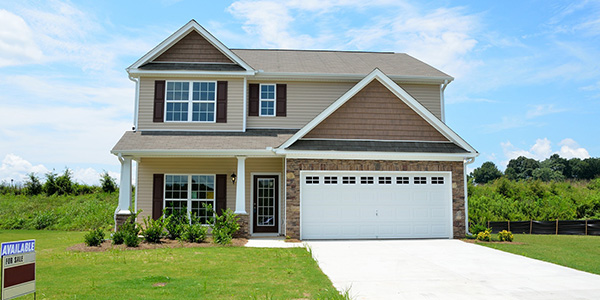
So…Is My Home Up to Code?
Answer: probably not. The 2013 Common Code Violations Survey found that over 45 percent of inspected homes had some sort of housing code violation. Fortunately, you may not have to repair your home’s violations if they don’t pose a safety risk. A housing inspector can help you determine what repairs you’ll need in order to sell your home.
Housing inspectors are not housing or building code enforcers. However, they can point you in the right direction and offer solutions to fix any problems with your home:

“During an inspection we usually find significant material defects that will affect the value of the home our clients purchase. Even on new homes that have just been built, we still find fire safety and electrical issues. The savings are usually much more than the cost of the inspection.”
Gary Martin | Integrity Building Inspections
Wondering how you can improve the safety of your home? Check out these renovation and maintenance tips.

